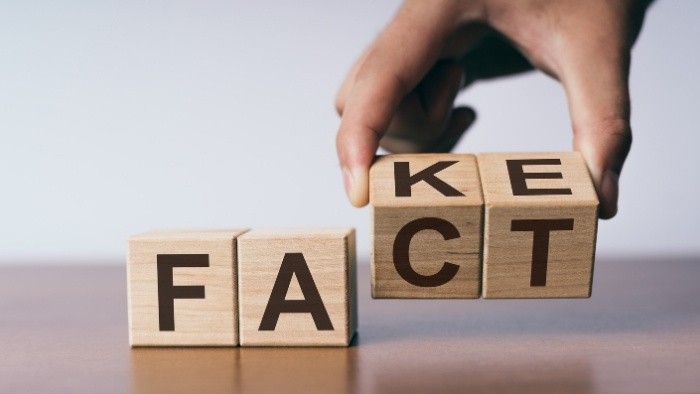Fighting Truth Decay: What Can Schools Do?

The Importance of Media Literacy
“Truth Decay” is the memorable label that the RAND Corporation, a nonprofit, nonpartisan research organization, has attached to the “diminishing role that facts, data, and analysis play in our political and civic discourse.” In 2018, RAND researchers identified four trends associated with Truth Decay that have fueled changes in our complex, rapidly evolving media and technology ecosystem.
|
Four trends related to Truth Decay |
|
|---|---|
|
1 |
Increasing disagreement about facts and how to interpret them |
|
2 |
Declining trust in formerly respected sources of facts and information |
|
3 |
Blurring of the line between opinions and facts |
|
4 |
Increasing volume and influence of opinions and personal experience over facts in our information ecosystem |
The last few years of public life in the U.S. illustrate how these trends have damaged the fabric of our democracy. If adults find this new media environment overwhelming, how can young people navigate it? And how should our schools help?
In 2021, RAND researchers released recommendations to counter Truth Decay, with a strong emphasis on media literacy education. Beyond that, they suggest a set of Media Literacy Standards based on the four trends listed above to guide what students need to learn.
What’s true?
To deal with the problem of disagreement about facts, three of the standards suggest how students — and adults frankly — can develop a more complete understanding of what is true. It starts with identifying gaps in your own knowledge or in what others are claiming and then filling those knowledge gaps. The standards also recommend caution regarding how modern information sources can limit or distort what you learn when you try to fill those gaps. For example, the report says students should recognize that the “first link identified in an internet search is not always the best source for factual information.”
Who can I trust?
Media literacy requires learning to identify trustworthy information sources. Students learn how to evaluate both the expertise of a given source and their motivation. Why is this group publishing or sharing information? Is it an effort to inform or an effort to persuade?
Students need to be able to discern the differences between sources. They need to know strategies for evaluating the credibility of a source, including the use of scientific processes and peer review. The Society of Professional Journalists describes a set of professional ethics and standards that begins with truthfulness and that hopefully helps distinguish responsible news outlets. The Media Literacy standards expect students, as consumers of information, to evaluate information for “bias, deception, and manipulation more generally.” The standards also recommend consideration of the social, political, and historical contexts that influence the meaning of the information.
The economic context matters, too. For example, this Ed100 blog about media literacy should be viewed differently than a similar one written by an organization selling a Media Literacy curriculum.
What proof is there?
It has become more and more difficult to tell opinion from fact, in part because of technology. Students may be better than their teachers at identifying the ways that technology can be used to doctor images, video, and audio. It can be as important to know that the technology exists, and is evolving, as it is to be able to identify the fakes. We all need to develop a healthy skepticism about what we see and hear, evidence we previously considered irrefutable.
Good old-fashioned logic also plays a role in media literacy, and the standards call for students to look critically at evidence. Is it adequate? Can it be independently confirmed? Where are there gaps? When there are discrepancies, students need to get in the habit of comparing multiple viewpoints on a single topic, including the evidence for each. Finally, students should be taught to “recognize how media and information can trigger emotional responses in addition to intellectual ones.” Evoking emotional responses is a technique advertisers have used for decades and other media, including political campaigns, have become increasingly adept at this as well.
How can individuals counter Truth Decay?
Check yourself
First, can we reduce the volume? Today’s information ecosystem is kind of like a noisy room where everyone talks louder and louder to be heard. Media literacy education seeks to temper that impulse, helping students anticipate and monitor the impact their shared information can have on both the virtual and real world. The standards also call on learners, before they share information, to recognize their own biases and perspectives.
Committing to life-long learning is another part of the strategy. We can encourage students to stay open to new information and to updating their point of view. Of course, that’s easier if you haven’t been yelling out an opinion on social media for the last month. It’s also easier if any actions you take in response to information are well-informed by credible evidence and an understanding of context.
Where do parents fit in?
RAND’s Media Literacy Education Standards are written for educators. They are meant to synthesize other work that has been done related to civic education and other academic areas such as the Common Core Standards. The report, and several other RAND publications on the topic of Truth Decay, are well-researched. If you are so inclined, there is plenty to read about what needs to happen in classrooms and society. As advocates for effective public education, we can all ask teachers and principals what they are doing about media literacy education and suggest they look at the standards that RAND has created.

California lawmakers passed a bill requiring the Department of Education to compile curriculum resources related to media literacy and you’ll find them on the Department’s website. On the Media Literacy Now website you’ll find a definition of media literacy and background information about California’s law.
Parents can model media literacy and teach their kids by example. Thankfully, there are some good resources specifically for parents that suggest strategies for doing so. For example, the National Association for Media Literacy Education has published this guide for parents, which is available in both English and Spanish. In addition, Common Sense Media has great articles about news and media literacy that parents can use at home.
Related to all of this, the State of California last year created a State Seal of Civic Engagement that more broadly addresses how schools can better prepare students to become responsible citizens.
 Mary Perry, an independent education consultant and longtime advisor for Ed100.org, has served many leadership roles for the California State PTA including Vice President for Education. She delivered an essential presentation at the 2020 Ed100 Academy for Student Leaders to help bring students to a shared level of understanding of the education system, and she is a confirmed speaker for the 2021 Student Academy.
Mary Perry, an independent education consultant and longtime advisor for Ed100.org, has served many leadership roles for the California State PTA including Vice President for Education. She delivered an essential presentation at the 2020 Ed100 Academy for Student Leaders to help bring students to a shared level of understanding of the education system, and she is a confirmed speaker for the 2021 Student Academy. Tags on this post
All Tags
A-G requirements Absences Accountability Accreditation Achievement gap Administrators After school Algebra API Arts Assessment At-risk students Attendance Beacon links Bilingual education Bonds Brain Brown Act Budgets Bullying Burbank Business Career Carol Dweck Categorical funds Catholic schools Certification CHAMP Change Character Education Chart Charter schools Civics Class size CMOs Collective bargaining College Common core Community schools Contest Continuous Improvement Cost of education Counselors Creativity Crossword CSBA CTA Dashboard Data Dialogue District boundaries Districts Diversity Drawing DREAM Act Dyslexia EACH Early childhood Economic growth EdPrezi EdSource EdTech Education foundations Effort Election English learners Equity ESSA Ethnic studies Ethnic studies Evaluation rubric Expanded Learning Facilities Fake News Federal Federal policy Funding Gifted Graduation rates Grit Health Help Wanted History Home schools Homeless students Homework Hours of opportunity Humanities Independence Day Indignation Infrastructure Initiatives International Jargon Khan Academy Kindergarten LCAP LCFF Leaderboard Leadership Learning Litigation Lobbyists Local control Local funding Local governance Lottery Magnet schools Map Math Media Mental Health Mindfulness Mindset Myth Myths NAEP National comparisons NCLB Nutrition Pandemic Parcel taxes Parent Engagement Parent Leader Guide Parents peanut butter Pedagogy Pensions personalized Philanthropy PISA Planning Policy Politics population Poverty Preschool Prezi Private schools Prize Project-based learning Prop 13 Prop 98 Property taxes PTA Purpose of education puzzle Quality Race Rating Schools Reading Recruiting teachers Reform Religious education Religious schools Research Retaining teachers Rigor School board School choice School Climate School Closures Science Serrano vs Priest Sex Ed Site Map Sleep Social-emotional learning Song Special ed Spending SPSA Standards Strike STRS Student motivation Student voice Success Suicide Summer Superintendent Suspensions Talent Teacher pay Teacher shortage Teachers Technology Technology in education Template Test scores Tests Time in school Time on task Trump Undocumented Unions Universal education Vaccination Values Vaping Video Volunteering Volunteers Vote Vouchers Winners Year in ReviewSharing is caring!
Password Reset
Search all lesson and blog content here.
Login with Email
We will send your Login Link to your email
address. Click on the link and you will be
logged into Ed100. No more passwords to
remember!














Questions & Comments
To comment or reply, please sign in .